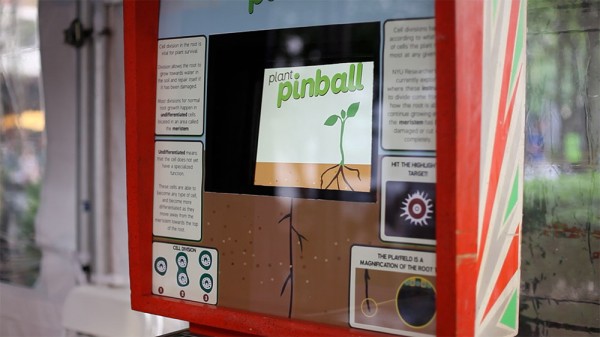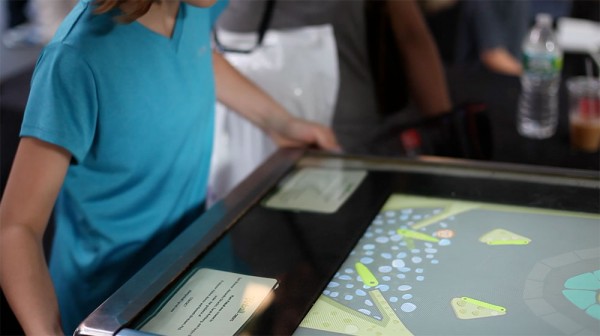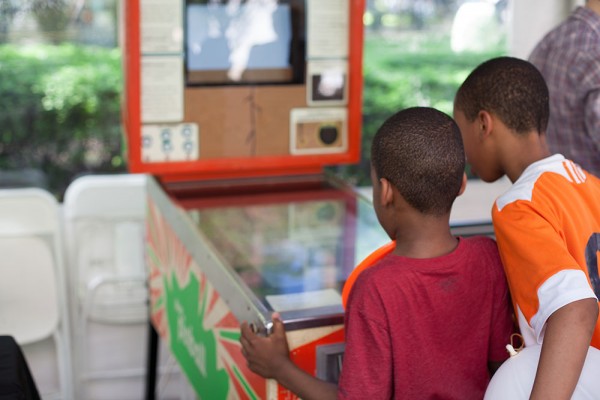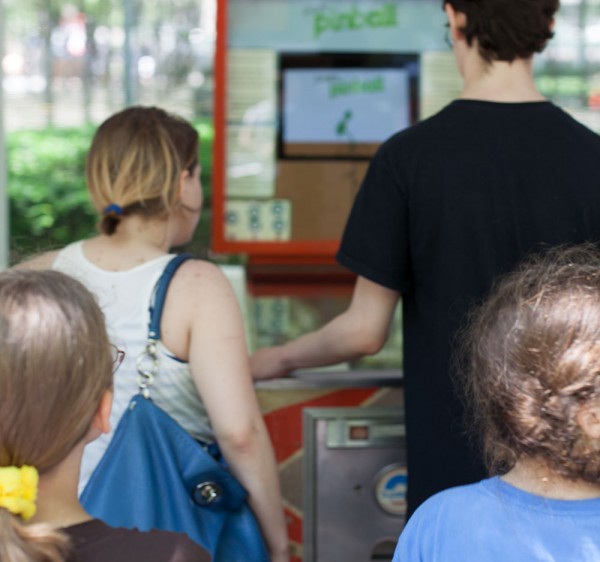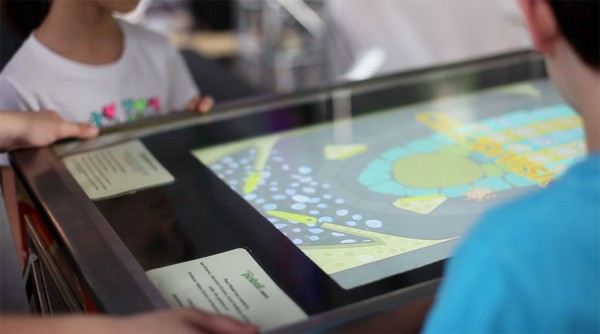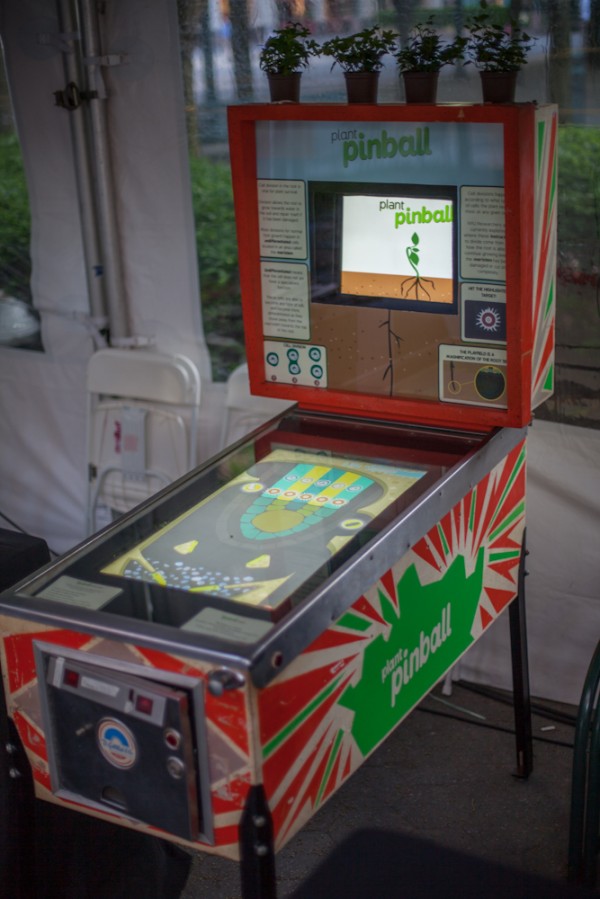
Plant Pinball is a virtual pinball game designed to teach users about the role roots play in the livelihood of a plant and the special qualities they have developed that enables them to survive. The project was done for the class Playful Communication of Serious Research, a museum exhibit design class, with teammates Sarah Rothberg, Alexandra Diracles and Fang-Yu Yang under the guidance of Professor Ken Birnbaum.
The aim of the game is to direct a virtual pinball towards one of five targets, representing the files of cells that comprise a plant’s root. Hitting a target causes a cell to divide in that respective file. All five targets must be hit for the plant root to grow, moving it closer to the water. Winning happens when the root grows to the bottom of the screen without drying up. Along the way, players encounter two obstacles: a fungus that eats the tip of the root off and a human who tramples the plant out of the ground. In each of these cases, players must complete a special task before normal root growth can continue. In the former case, we direct players to hit a “stem cell niche,” which plants are able to regenerate. In the latter case, the player hits targets to elongate certain cells, a process known as gravitropism.
After completion, we showed the project at ITP’s Spring Show, the World Science Festival’s Innovation Square (see my 15 seconds of local news fame here) and the lobby of NYU’s Center for Genomics and Systems Biology, where it was enjoyed by kids and adults alike.
As a group, we came up with the idea and designed the game’s user experience. In the production phase, I served as the developer. It was built in Adobe AIR and the source code is available on GitHub. Due to filesize concerns, some assets aren’t up on GitHub but if you are interested in them please send me an email.
